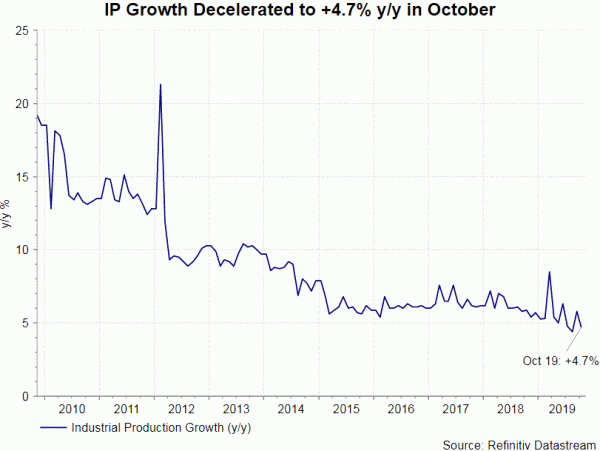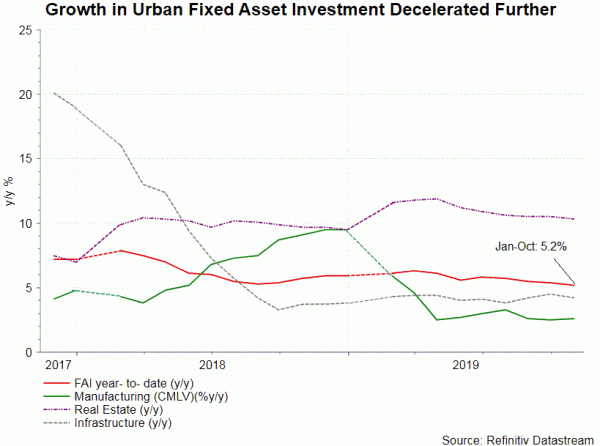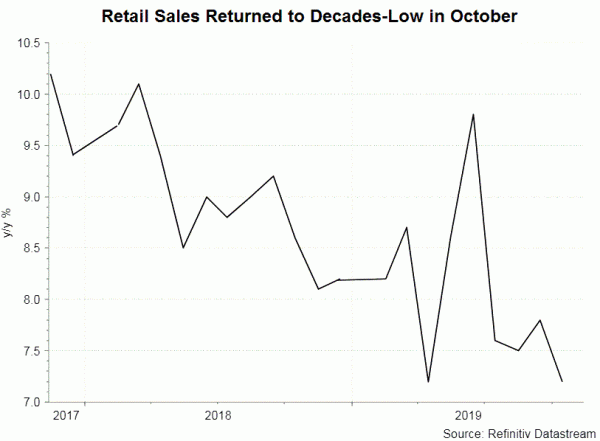China’s major economic data in October all missed expectations and slowed from a month ago. Growth in industrial production decelerated to +4.7% y/y, from +5.8% in September. Retail sales growth weakened to 7.2% m/m, compared with +7.8% in September. Part of the reasons can be deferred spending ahead of the Double 11 festival in China. Urban fixed asset investment expanded +4.7% y/y in the first 10 months of the year, trimming -1.1 percentage points to the first 9 months. The market had anticipated a +5.5% growth.


 Earlier in the week, a credit report revealed that both bank and non-bank load growth moderated. New renminbi loans fell to RMB 661.3B in October down from RMB 697B at the same period last year. Money supply (M2) growth steadied at +8.4%. Total social financing (TSF) declined -16% y/y to RMB618.9B in October.
Earlier in the week, a credit report revealed that both bank and non-bank load growth moderated. New renminbi loans fell to RMB 661.3B in October down from RMB 697B at the same period last year. Money supply (M2) growth steadied at +8.4%. Total social financing (TSF) declined -16% y/y to RMB618.9B in October.
Disappointing macroeconomic and credit data were a result of less stimulus from the government. Government’s stimulus policy was reduced after National Day celebration and as third quarter GDP managed to maintain 6% growth. Meanwhile, elevated inflation has retrained PBOC from implementing aggressive easing measures. Meanwhile, the weak indicators suggested that the country’s economy continue to face headwind. It is a matter of how PBOC can manage the dilemma of slowing growth and rising inflation. Last week, PBOC cut the MLF rate by just -5 bps, revealing its struggle. We expect headline inflation to rise further in coming months. In this case, the central bank should attempt to inject liquidity to the market via refinancing operations. While we expect the prime lending rate will be lowered in response to MLF cut last week, further rate cut is less likely. Meanwhile, the chance of further RRR cut is also not too high, on concerns on exacerbating the price level.












